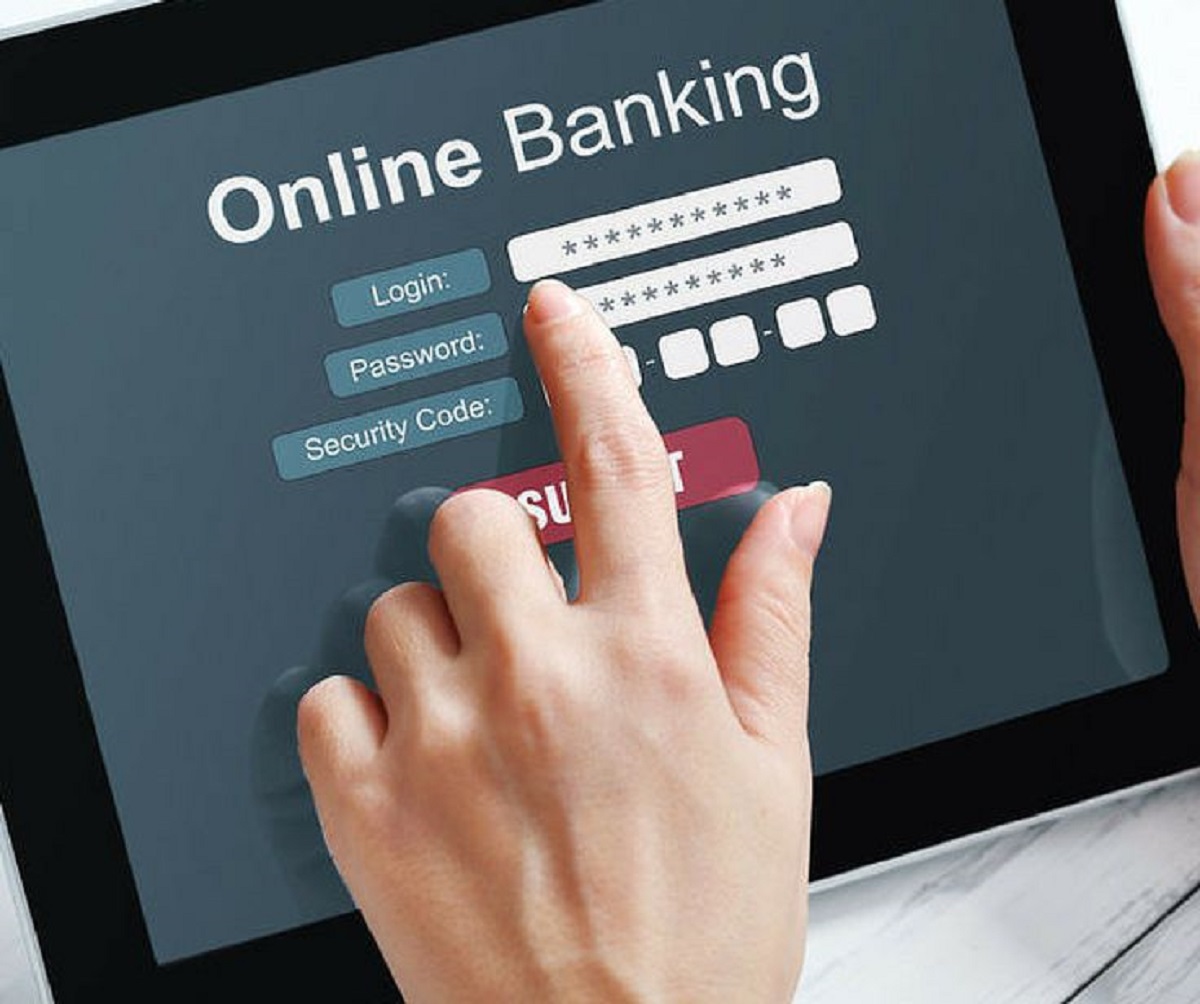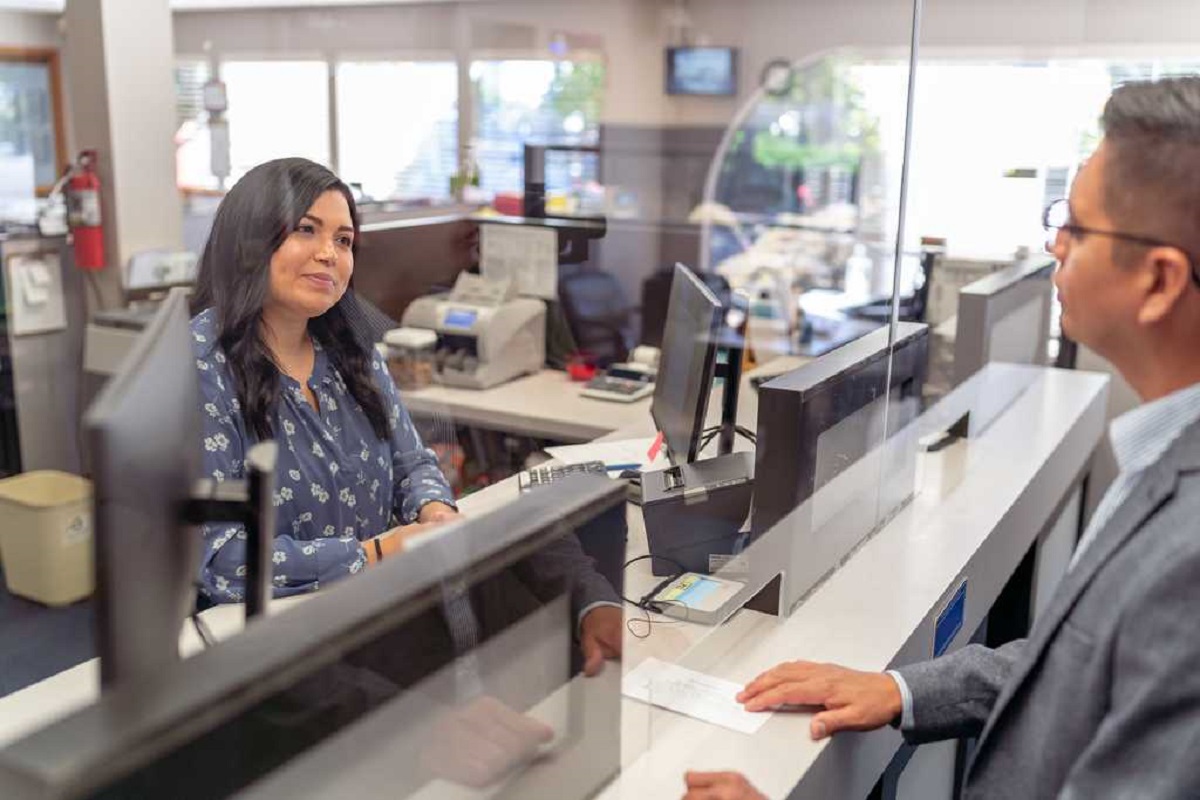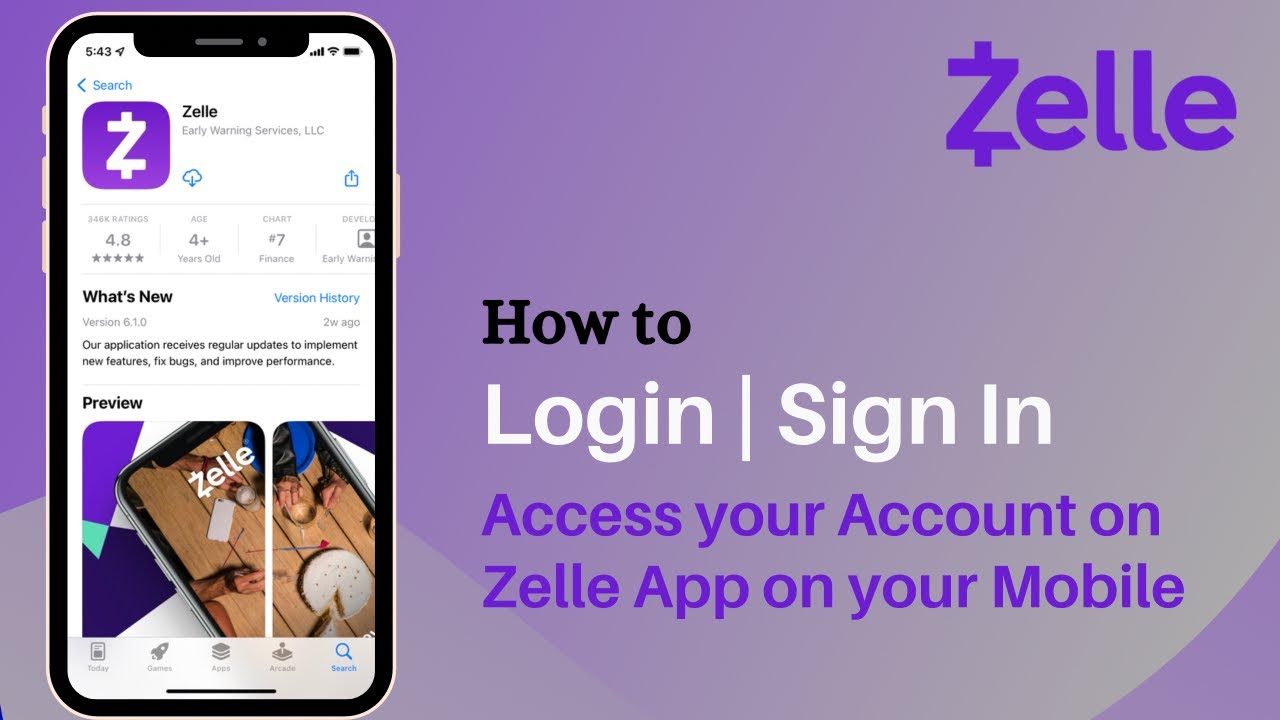Introduction
Welcome to the digital age of banking! Online banking has revolutionized the way we manage our finances, providing convenience, accessibility, and security at our fingertips. Opening an online banking account is a straightforward process that allows you to access your funds, make transactions, and monitor your accounts from anywhere in the world.
In this article, we will guide you through the step-by-step process of opening an online banking account. Whether you’re new to online banking or looking to switch to a different provider, we’ve got you covered. So, let’s dive in and explore the world of online banking!
Before we delve into the specifics, it’s important to mention that online banking offers a wide array of benefits. It saves you time by eliminating the need to physically visit a bank branch, allows you to view and manage your accounts 24/7, and provides enhanced security measures to protect your financial information.
With online banking, you can easily transfer funds between accounts, pay bills, deposit checks, apply for loans, and much more, all from the comfort of your home or on-the-go using your smartphone or computer. So, if you’re ready to embrace the convenience and efficiency of online banking, let’s get started with the first step: researching your online banking options.
Step 1: Researching Online Banking Options
Before diving into the world of online banking, it’s essential to research and evaluate different banking options to find the one that best suits your needs. With numerous online banks available, each offering unique features and benefits, investing some time in research will ensure you make an informed decision.
Start by identifying your banking requirements. Consider factors such as the types of accounts you need (checking, savings, CDs), the ability to access your accounts via mobile apps, the availability of a wide ATM network, and any specific features or perks you desire, such as rewards programs or budgeting tools.
Once you have a clear idea of your needs, begin comparing different online banks. Visit their websites and explore the range of products and services they offer. Take note of their fees, interest rates, ease of use, customer reviews, and overall reputation. Look for banks that have a strong online presence, reliable customer support, and a user-friendly interface.
It’s also crucial to consider the bank’s security measures. Look for banks that utilize encryption technologies and multi-factor authentication to ensure the safety of your personal and financial information. Additionally, check if the bank is insured by the Federal Deposit Insurance Corporation (FDIC) or a similar regulatory body, as this protects your deposits in case of bank failure.
Reading online banking reviews and forums can provide valuable insights into the experiences of other customers. Consider both positive and negative reviews to get a well-rounded perspective.
Don’t forget to check for any promotional offers or sign-up bonuses that online banks might have. These incentives can be a significant factor in your decision-making process. However, make sure to read the fine print regarding any requirements or restrictions that may apply.
By thoroughly researching your options, you will be able to choose an online bank that aligns with your financial goals and preferences. Once you’ve narrowed down your choices and selected the right online bank, you’re ready to proceed to the next step: opening your online banking account.
Step 2: Choosing the Right Online Bank
Now that you’ve done your research and have a list of potential online banks, it’s time to narrow down your options and choose the one that best meets your needs and preferences. Here are some key factors to consider when selecting the right online bank:
1. Reputation and Reliability: Look for online banks with a solid reputation and a track record of providing reliable services. Check if the bank is well-established and regulated by reputable financial authorities.
2. Fees and Charges: Review the fee structure of each online bank to ensure that it aligns with your financial goals. Pay attention to charges such as monthly maintenance fees, ATM fees, overdraft fees, and transaction fees.
3. Account Types: Consider the types of accounts offered by the online bank. Are they suitable for your banking needs? Look for options such as checking accounts, savings accounts, certificates of deposit (CDs), and individual retirement accounts (IRAs).
4. Interest Rates and APY: Compare the interest rates and Annual Percentage Yields (APYs) offered by different online banks. Higher interest rates can help your money grow faster over time.
5. Accessibility: Evaluate the convenience and accessibility of the online bank’s platform. Is it user-friendly and easy to navigate? Can you access your accounts through a mobile app? Are there nearby ATMs for cash withdrawals?
6. Customer Service: Consider the quality of customer service provided by the online bank. Prompt and reliable customer support can be essential when you encounter issues with your account or need assistance.
7. Security Measures: Check the security measures implemented by the online bank to protect your personal and financial information. Look for features such as encryption, multi-factor authentication, and fraud monitoring.
8. Additional Features and Perks: Some online banks offer additional features like budgeting tools, mobile check deposit, person-to-person transfers, and rewards programs. Consider these extra perks when making your decision.
By carefully considering these factors, you can select the online bank that best aligns with your financial goals and preferences. Remember, opening an online banking account is a long-term commitment, so take your time to choose wisely. Once you’ve decided on the right online bank, you’re ready to move on to the next step of the process: gathering the required documents and information.
Step 3: Gathering Required Documents and Information
Before applying for an online banking account, you’ll need to gather the necessary documents and information to ensure a smooth and efficient application process. Here’s a checklist of what you’ll typically need:
1. Personal Identification: Prepare a valid government-issued identification document, such as a driver’s license, passport, or national ID card. Make sure it is not expired and includes your full name, date of birth, and a clear photograph of you.
2. Social Security Number or Tax Identification Number: Online banks often require your Social Security Number (SSN) or Tax Identification Number (TIN) to verify your identity and comply with regulatory requirements. Have this number readily available.
3. Proof of Address: Provide a document that confirms your residential address, such as a utility bill, bank statement, or lease agreement. Make sure it displays your full name and matches the address you provided during the application process.
4. Employment and Income Details: Some online banks may ask for information about your employment status and income. Be prepared to provide details about your current employer, job title, and monthly or annual income. This helps the bank assess your financial capacity and suitability for certain products.
5. Financial Account Information: If you plan to link your existing bank accounts or make transfers to and from your online banking account, gather the necessary details. This may include your account numbers, routing numbers, or information about the financial institutions where your accounts are held.
6. Personal Contact Information: Have your contact details at hand, including your current phone number and email address. Ensure that the information you provide is accurate and up-to-date.
7. Additional Documentation: Depending on the online bank and the type of account you’re opening, you may need to provide additional documentation. This could include documents for joint account holders, business verification for business accounts, or legal documentation for trust accounts. Check the specific requirements of your chosen bank to be prepared.
By gathering these documents and information in advance, you’ll be well-prepared to complete the online banking account application without delays or complications. Ensuring the accuracy and completeness of the provided information will help expedite the process and increase the chances of a successful account opening.
Step 4: Applying for an Online Banking Account
Now that you have gathered all the necessary documents and information, it’s time to apply for an online banking account. The application process typically varies from one online bank to another, but the general steps are outlined below:
1. Visit the Online Bank’s Website: Go to the official website of the online bank you have chosen. Look for a prominent “Open an Account” or “Sign Up” button to begin the application process. Click on it to get started.
2. Select the Account Type: Choose the type of account you wish to open, such as a checking account, savings account, or a combination of both. Familiarize yourself with the features, benefits, and terms associated with each account type before making a selection.
3. Complete the Online Application: Fill out the online application form with accurate and up-to-date information. Provide the personal details, identification documents, contact information, and any other required information as requested by the online bank. Take your time to double-check the entered information for accuracy.
4. Review the Terms and Conditions: Carefully read and understand the terms and conditions presented by the online bank. It’s important to be aware of any fees, limitations, or important clauses that may affect your banking experience. If you have any questions or concerns, contact the customer support team before proceeding.
5. Confirm Your Application: Review your completed application to ensure all the provided information is correct. Submit the application electronically through the online banking platform. In some cases, you may also have the option to print and mail the application if electronic submission is not available.
6. Await Verification and Approval: After submitting your application, the online bank will verify the information provided. This may involve checking your credit history, verifying your identification, and reviewing your application for approval. The time to process the application can vary, so be patient and monitor your email or online account for updates.
7. Sign and Return Required Documents: In some cases, the online bank may request you to sign and return specific documents, such as signature cards or account agreements. Make sure to comply with these requests promptly to expedite the account opening process.
8. Fund Your Account: Once your application is approved and your account is opened, you’ll need to deposit funds into your online banking account. Follow the instructions provided by the online bank to initiate the deposit, which may involve transferring money from an existing account, setting up direct deposit, or mailing a check.
By following these steps and adhering to the instructions provided by the online bank, you can successfully apply for an online banking account. Remember to save copies of your application and any related documents for future reference. With your application complete, it’s time to move on to the next step: verifying your identity and address.
Step 5: Verifying Identity and Address
Verifying your identity and address is a crucial step in the process of opening an online banking account. Online banks have stringent security protocols and regulatory requirements that necessitate verifying the information provided during the application. Here’s what you can expect during this step:
1. Identity Verification: The online bank will typically use various methods to verify your identity. This may involve cross-referencing the information you provided with external databases, conducting a credit check, or requesting additional identification documents.
2. Document Submission: If required, you may be asked to submit additional identification documents to further validate your identity. These documents may include copies of your government-issued ID, social security card, or other forms of identification specified by the online bank.
3. Address Verification: The online bank will also verify the address you provided during the application process. This may be done by requesting a copy of a recent utility bill, bank statement, or rental agreement that clearly displays your name and residential address.
4. Follow Instructions: Pay close attention to any instructions provided by the online bank regarding the submission of identification and address verification documents. Follow these instructions carefully and provide all requested information promptly to avoid delays in the verification process.
5. Allow Processing Time: The verification process can take some time, depending on the online bank and the volume of applications they receive. Be patient and wait for confirmation from the bank that your identity and address have been successfully verified.
6. Contact Customer Support if Needed: If you have any questions or concerns during the verification process, do not hesitate to contact the customer support team of the online bank. They can provide guidance and assistance to ensure a smooth verification experience.
7. Re-verification in the Future: It’s important to note that online banks may periodically re-verify your identity and address, especially when significant changes are made to your account details. This is done to maintain the security and integrity of the banking system.
By cooperating with the online bank and promptly providing any requested documents or information, you can successfully complete the identity and address verification process. Once your identity and address have been verified, you can proceed to the next step: setting up security measures for your online banking account.
Step 6: Setting Up Security Measures
Security is of utmost importance when it comes to online banking. To protect your financial information and ensure the integrity of your online banking account, you must set up robust security measures. Here are the steps to follow:
1. Create a Strong and Unique Password: Start by creating a strong password that includes a combination of uppercase and lowercase letters, numbers, and special characters. Avoid using common passwords or personal information that can be easily guessed. Also, make sure to use a unique password for your online banking account and refrain from using it for other purposes.
2. Enable Two-Factor Authentication: Two-factor authentication (2FA) adds an extra layer of security by requiring a second form of verification, such as a unique code sent to your mobile device, in addition to your password. Enable this feature in your online banking account settings to enhance security.
3. Keep Your Contact Information Updated: Maintain accurate and up-to-date contact information in your online banking account. This ensures that you receive important notifications and alerts regarding your account activity. Regularly check and update your email address and phone number to avoid missing critical information.
4. Set Up Account Alerts: Many online banks offer account alert options that notify you of specific activities or transactions on your account. Enable these alerts to receive notifications via email or text message. This allows you to stay informed about any suspicious or unauthorized activities and take immediate action if necessary.
5. Regularly Monitor Your Account: Make it a habit to frequently review your online banking transactions and account activity. Be vigilant in identifying any discrepancies or unauthorized transactions. Report any suspicious activity to your online bank’s customer support immediately.
6. Protect Your Devices: Ensure that the devices you use for online banking, such as your computer, smartphone, or tablet, are protected by up-to-date antivirus and anti-malware software. Keep your operating system and applications patched with the latest security updates. Avoid using public Wi-Fi networks for online banking, as they can be vulnerable to hacking.
7. Be Wary of Phishing Attempts: Stay vigilant and cautious of phishing attempts, where scammers try to trick you into revealing sensitive information. Be particularly cautious of unsolicited emails, text messages, or phone calls that request your account details or personal information. Online banks typically do not request sensitive information through these channels.
8. Regularly Change Your Password: It is good practice to change your online banking password regularly. Aim to change it every few months to minimize the risk of unauthorized access to your account. Remember to follow the same guidelines for creating a strong and unique password.
By following these security measures, you can better safeguard your online banking account from potential threats and unauthorized access. Maintaining good security practices is a crucial aspect of maintaining the integrity and privacy of your financial information.
Step 7: Funding Your Online Banking Account
Once your online banking account is set up and the security measures are in place, it’s time to fund your account. Funding your online banking account allows you to deposit money and start using the various banking services. Here are the steps to successfully fund your online banking account:
1. Determine the Funding Method: Online banks offer various options for funding your account. Common methods include electronic transfers from external bank accounts, mobile check deposits, wire transfers, or mailing a physical check. Review the options provided by your online bank and choose the one that suits you best.
2. Link External Bank Accounts: If you plan to transfer funds from an external bank account, you’ll need to link it to your online banking account. Follow the instructions provided by your online bank to link the accounts securely. This typically involves providing the account numbers and routing numbers of the external bank account.
3. Initiate the Deposit: Once you have determined the funding method and linked external accounts (if applicable), you can initiate the deposit into your online banking account. This may involve using the online banking platform, mobile app, or following specific instructions provided by your online bank.
4. Set the Deposit Amount: Decide on the amount you want to deposit into your online banking account. It can be a one-time deposit or recurring deposits, depending on your needs and preferences. Ensure that you have sufficient funds available in the external account or the check you’re depositing.
5. Review and Confirm: Before finalizing the deposit, carefully review the details to ensure accuracy. Confirm that you selected the correct account, deposit amount, and funding method. Mistakes in the deposit process could cause delays or complications in accessing your funds.
6. Wait for Processing: The processing time for your deposit will vary depending on your online bank and the funding method used. Electronic transfers may take a few business days, while mobile check deposits may be available for use within a shorter timeframe. Be aware of any hold periods that may apply to new deposits.
7. Confirm Deposit Availability: Once the deposit has been processed, confirm that the funds are available in your online banking account. You can review your account balance through the online banking platform, mobile app, or by contacting customer support. Make sure to consider any potential fees associated with your account type or the funding method used.
8. Utilize Your Funds: With the funds in your online banking account, you can start utilizing the various services provided by your online bank. This may include making purchases, paying bills, transferring funds, or investing in other financial products offered by your online bank.
By following these steps, you can successfully fund your online banking account and begin using the available banking services. It’s important to keep track of your account balance and replenish funds as needed to ensure uninterrupted access to your online banking features and benefits.
Step 8: Activating and Accessing Your Online Banking Account
After successfully setting up your online banking account and funding it, the final step is to activate and access your account. This step allows you to start managing your finances online and taking advantage of the features and benefits offered by your online bank. Here’s how to activate and access your online banking account:
1. Activation Process: Some online banks require you to activate your account before gaining full access. Activation may involve confirming your email address, setting up a username and password, or completing additional security measures. Follow the instructions provided by your online bank to activate your account.
2. Set Up Online Credentials: If you haven’t already, create a unique username and secure password for your online banking account. These credentials will be used to log in to your account each time you access it. Make sure to adhere to the online bank’s guidelines for creating strong and secure login credentials.
3. Securely Store Your Login Information: Keep your login information in a secure and easily accessible location. This ensures that you can log in to your account conveniently while protecting your information from unauthorized access. Avoid sharing your login credentials with anyone and refrain from using easily guessable passwords.
4. Access Your Online Banking Account: Once your account is fully activated, you can access it through the online banking platform or the mobile app provided by your online bank. Use the secure login credentials you set up earlier to log in and gain access to your account dashboard.
5. Familiarize Yourself with the Interface: Take some time to explore the online banking platform and become familiar with its features and navigation. Understand where you can view your account balances, transaction history, statements, and other important details. Familiarize yourself with the available banking services like fund transfers, bill payments, and mobile check deposits.
6. Customize Your Account Settings: Most online banking platforms allow you to customize certain account settings to meet your preferences. This may include setting up account alerts, updating contact information, or selecting notification preferences. Adjust these settings according to your needs to enhance your online banking experience.
7. Keep Your Account Secure: As you access your online banking account, maintain good security practices. Be cautious of phishing attempts and suspicious emails, texts, or calls. Regularly monitor your account activity, report any unauthorized transactions promptly, and keep your devices secure with up-to-date antivirus software.
8. Contact Customer Support if Needed: If you encounter any issues or have questions regarding your online banking account, don’t hesitate to reach out to the customer support team of your online bank. They can provide guidance, clarify any doubts, and assist you in navigating the online banking platform or resolving any account-related concerns.
By following these steps, you can successfully activate and access your online banking account. Take the time to familiarize yourself with the platform’s features to make the most of your online banking experience. Enjoy the convenience, accessibility, and security of managing your finances online!
Conclusion
Congratulations! You have now learned the step-by-step process of opening and accessing your online banking account. By following these steps, you can enjoy the convenience, accessibility, and security that online banking offers.
Throughout this guide, we explored the importance of researching and choosing the right online bank that aligns with your financial needs and preferences. We emphasized the significance of gathering the required documents and information, as well as the importance of verifying your identity and address to ensure a smooth application process.
We also discussed the significance of setting up robust security measures to protect your online banking account. By creating secure passwords, enabling two-factor authentication, and regularly monitoring your account, you can minimize the risk of unauthorized access and fraud.
Additionally, we covered the process of funding your online banking account, allowing you to deposit money and start utilizing the various banking services provided by your online bank. We also highlighted the final step of activating and accessing your online banking account through the online banking platform or mobile app.
Remember, as you embark on your online banking journey, it’s essential to remain vigilant and cautious. Be mindful of potential phishing attempts, regularly review your account activity, and promptly report any suspicious transactions to your online bank’s customer support.
Online banking provides a plethora of benefits, including the ability to manage your finances at your convenience, access your accounts 24/7, and enjoy enhanced security features. Take the time to familiarize yourself with the online banking platform, explore its features, and customize your settings to suit your preferences.
Now that you’re equipped with the knowledge and steps to open and access your online banking account, it’s time to embrace the convenience and efficiency of online banking. Start enjoying the myriad of benefits it offers, and take control of your financial journey from the comfort of your home or on-the-go.
So, what are you waiting for? Begin your online banking adventure today and experience the seamless and innovative world of digital banking!

























